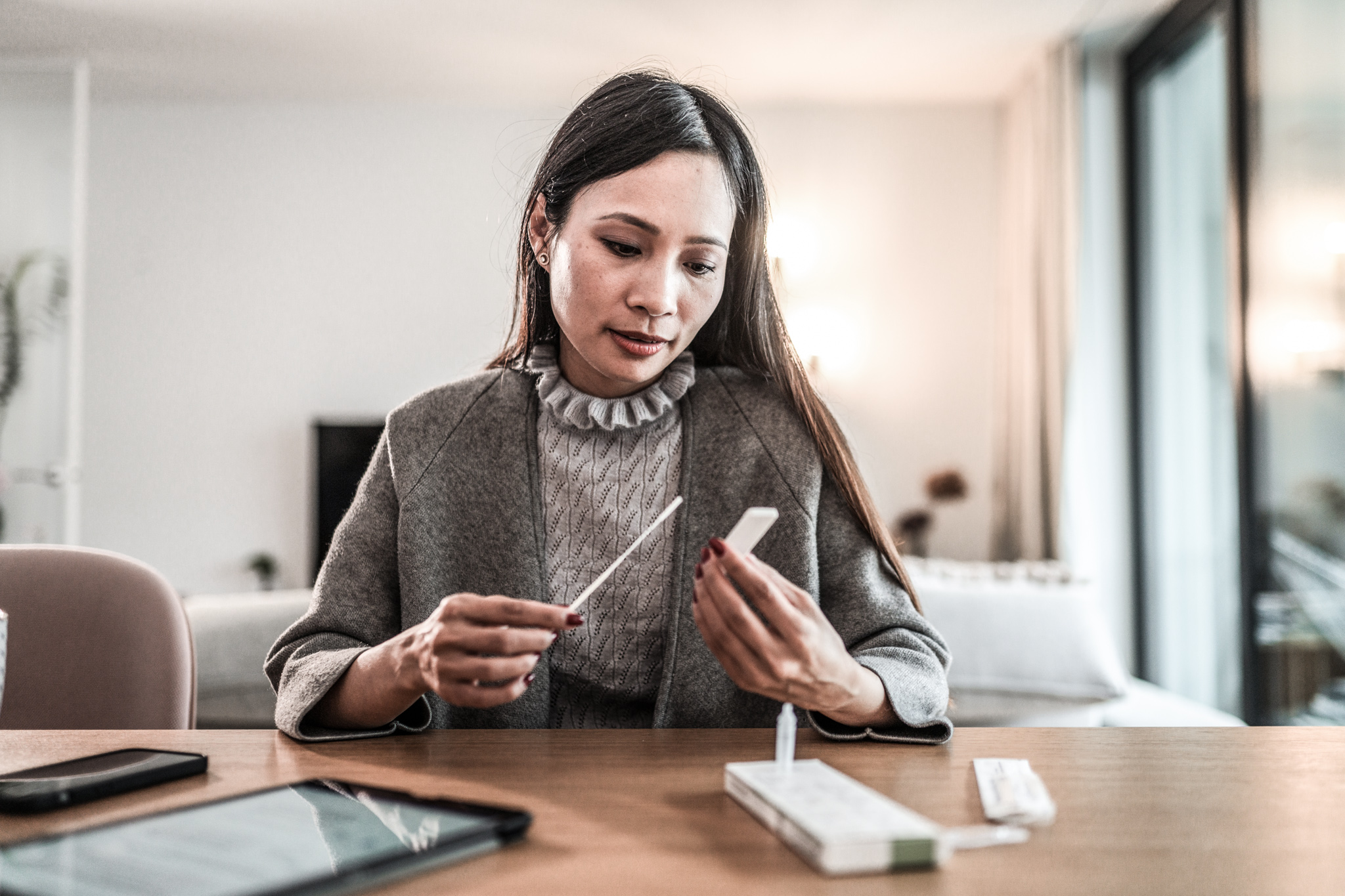The advancements we’ve seen in treatments and testing for COVID-19 have been remarkable, and as healthcare workers, we are so thankful these advancements have come along. Improved access to COVID-19 testing using rapid antigen and polymerase chain reaction (PCR) tests, vaccines, monoclonal antibody treatments and antiviral pills for COVID-19 have all given us reason to believe there is an end to this pandemic in sight.
When it comes to rapid COVID-19 antigen tests, though, it’s important to know how to interpret them – especially the ones for at-home use. These tests have been hard to find on shelves in stores but buying online has made it increasingly easier. And now, the United States government is offering every household in the U.S. four free, rapid, at-home COVID-19 tests that will be mailed directly to you by the United States Postal Service.
The bottom line is that at-home tests aren’t perfect, though. False positives – meaning the test is positive, but you don’t actually have COVID-19 infection – can occur, particularly in asymptomatic individuals. More worrisome than a false positive test, though, is a false negative – meaning the test is negative, but you do in fact have COVID-19 infection.
It’s best and easiest understood using a couple of examples.
When to trust an at-home COVID-19 test
Suppose you have signs and symptoms of COVID-19 infection during a period when there are a lot of COVID-19 viruses circulating in the community, and your rapid antigen test at home is positive. In that case, it will help you know to immediately isolate yourself from other household members.
You should immediately contact your health care provider to discuss the positive rapid antigen test results and further guidance regarding treatment and isolation.
Your provider may still recommend a PCR test to confirm the positive rapid antigen test result and to rule out a false-positive result, especially when a low COVID-19 virus is circulating in the community.
When to get a PCR test to back up your rapid results
If you’re showing signs and symptoms of COVID-19 and you take a rapid COVID-19 antigen test at home, but your rapid antigen test result is negative, you should continue to isolate and follow up with a COVID-19 PCR test to confirm.
PCR tests are the most reliable form of testing for COVID-19, and as discussed above, we wouldn’t want you to get a false negative or false positive. Early in COVID-19 illness, PCR tests can detect the virus particles that rapid antigen tests cannot.
Getting tested early and diagnosing COVID-19 infection early helps start treatment earlier in those at a higher risk of severe disease. Antiviral treatment for COVID-19 should be started within five days of symptom onset. While monoclonal antibody treatment can be given within ten days of symptom onset, it is still recommended to get them within the first week of symptom onset as much as possible.
Even with these advancements, vaccination is still our best weapon to fight COVID-19. By doing your part and getting your vaccine and booster shot, we hope you’ll be able to avoid the virus or not experience serious symptoms should you get it.
Please find a vaccine near you or learn about booster shots and third doses or see if you’re eligible for either one.




